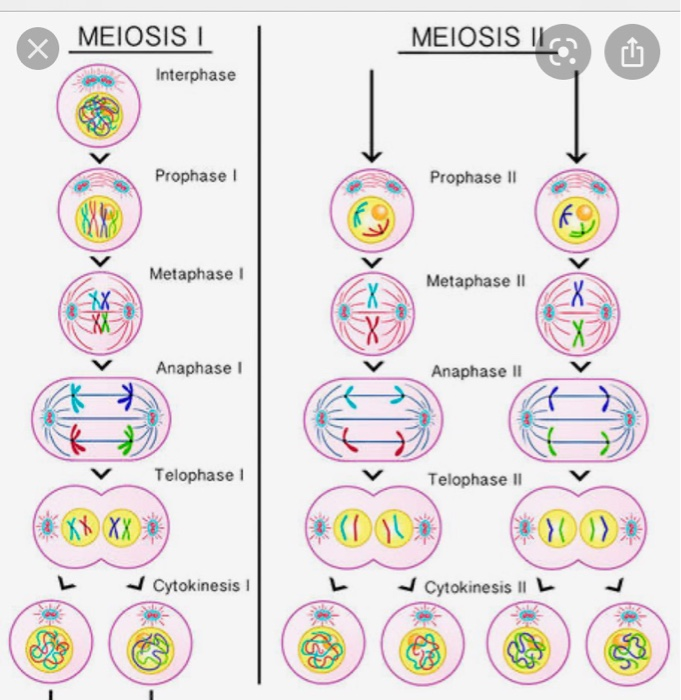Cellular Reproduction
In eukaryotes the DNA strand is wound up in a tight coil called chromosome
Chromosomes are condensed structures that contain DNA visible during mitosis.
Chromatin is a mixture of proteins and DNA that forms chromosomes
Nucleosomes are basic packing unit of DNA built from histone proteins around it and DNA coiled and are grouped together into chromatin fibers
important for how proteins gain access to DNA-binding sites located within the nucleosomes
fundamental unit of chromatin
HUMAN CELLS HAVE 46 CHROMOSOMES
Properties of Chromosomes
contains cell’s genetic code
It has a matching pair called homologous pairs
The Cell Cycle
A cycle that cells reproduce by growing and dividing
Importance of the cell cycle
allows your body to grow and heal certain injuries
Duration of the cell cycle: 8 minutes in eukaryotic cells while other cells take one year
Three main stages of the cell cycle
Interphase
Mitosis
the cells divide into two identical cells
somatic cell division
Cytokinesis
Types of Cell Division
Bacteria(Prokaryotes)
Binary fission
Interphase: the stage during which the cell grows, develops into a mature, functioning cell, duplicates DNA in its nucleus and prepares for division.
each chromosome copies itself
Divided into three stages:
Gap 1(G1)
Synthesis(S)
Gap 2(G2)
G1 Phase:
known as the growth phase
occurs after the cell divides
chromosomes uncoils into U chromatin which is used to produce RNA
produce the materials needed by the cell such as protein
increases in size; doubles in size
Restriction Point: some cells such as muscle and nerve cells exit the cell cycle (G not phase, organelles that does not wish to divide, some cells spend majority of their time in the resting phase - nerve cell)
Synthesis(S)
Replication Phase
produces a small amount of protein and organelles
focuses on DNA replication
Replicated chromosome and original chromosome are joined together at the centromere
the centromere is important because it ensures that a copy of the replicated DNA will become part of the daughter cells
46 original chromatids and 46 replicated chromatids to make a total of 92 chromatids
G2 Phase
Makes sure the cell is fully prepared for mitosis
Continues producing organelles and proteins to make sure it’s enough
Contains a checkpoint at the end: the cell checks for the level of protein known as Mitosis Promoting Factor/Maturation promoting factor
If the concentration level is high enough, the cell enters Mitosis
Mitosis: the 2nd stage of the cell cycle where a single cell divides into two identical daughter cells
mistakes made during mitosis can lead to changes in DNA and genetical disorders
Importance of Mitosis:
to replace worn out cells
New cells are produced when an injury occurs
important for maintaining chromosome number in organisms that undergo asexual reproduction.
4 stages of mitosis
Prophase
Metaphase
Anaphase
Telophase
Prophase
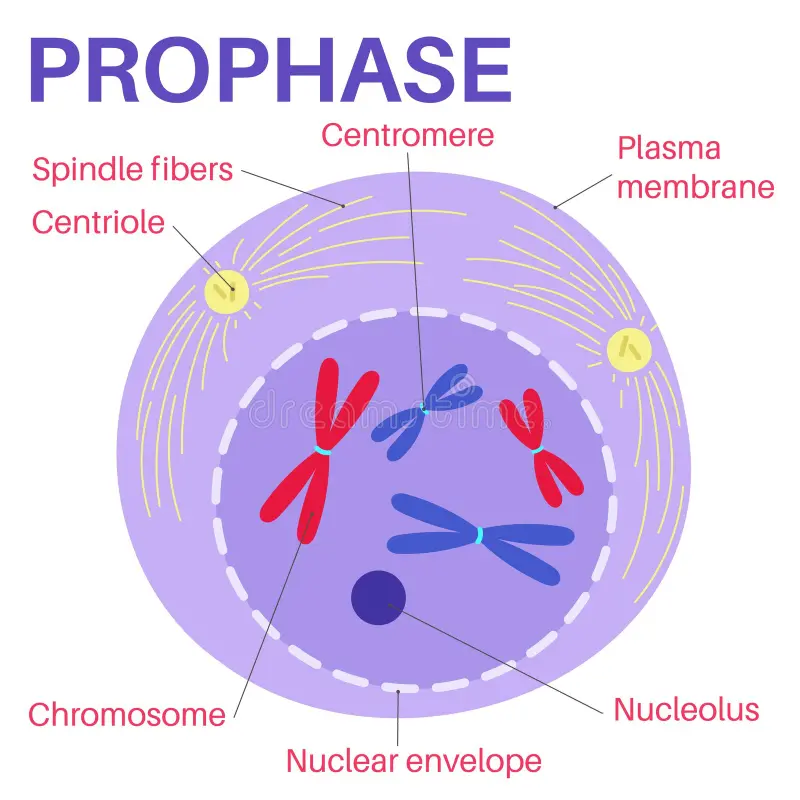
The cell’s chromatin condenses to form chromosomes (shaped like an X)
Half of the X is called a sister chromatid
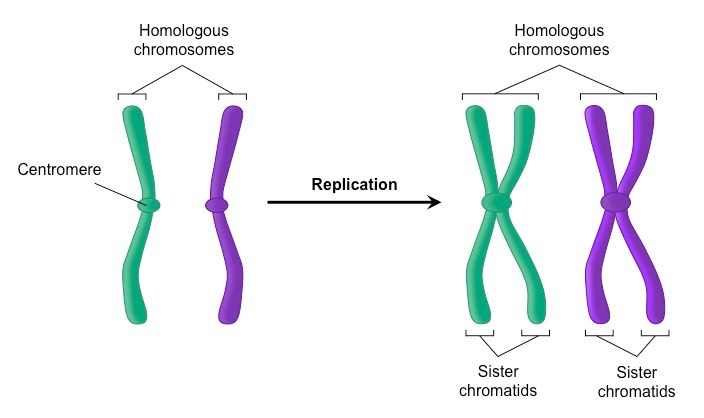
Spindle Fiber+Centrioles+Aster Fibers= Spindle apparatus
Important in moving and organizing the chromosomes before cell division
Centrioles begin to move towards opposite end of the cells, the spindle fibers began to grow
The nuclear membrane starts to disintegrates and nucleolus disappears
allows the spindle fiber to make way to the nucleus region of the cell to attach to special region of the centromere
Metaphase:
Spindle fibers move the chromosomes to the center of the cell; they align them on an equatorial line
it ensures that the cell is ready to divide
Anaphase:
known as disjunction
Chromosomes break at the centromere
The chromatids are pulled apart by the spindle fiber by breaking the centromere
Each of the chromatid has a unique centromere region, begin to move to opposite ends
Results in separation of chromosomes.
Telophase:
chromosomes are moved to opposite end, containing an identical set of chromosomes
the nuclear membrane begins to reform on both sides, developing the nuclear membrane and nucleolus
these encloses the two sets of identical chromosomes
Spindle fibers deteriorate and chromosomes decondenses
Cytokinesis:
the breaking of the cytoplasm
the cell membrane begins to divide
organelles are distributed between two cells equally
Chromosomes condenses into chromatin
The daughter cells are smaller than the original cell
Animal Cells:
microfilaments are used to pinch the cytoplasm; occurs in the furrow
Plant Cells:
a new structure called a cell plate is formed between the two daughter nuclei
Cell walls form on either side of the cell plate.
Cell Cycle Regulation
Three Major Checkpoints
End of G1 : Is the DNA damaged?
End of G2: Has all DNA been replicated?
End of S: Is the DNA replicating correctly
Mitosis: Are chromosomes properly attached to spindles?
The checkpoints are regulated by:
Cyclin/CDK combinations control different activities at different stages in the cell cycle
Cyclones
proteins that bind enzymes called Cyclin-dependent kinases
CDK
phosphorylate proteins either activating or deactivating them
are kinases
Tumor suppressors
P53
can activate several pathways including cell cycle arrest when an DNA is damaged
Meiosis & Sexual Reproduction
Gene- The DNA on chromosomes arranged in regions, codes the information for proteins
Homologous chromosomes- one chromosome from each parent, pair of chromosomes that are similar length and have a similar gene positioning
Gametes- sex cells that have half the number of chromosomes
Fertilization- process by which one haploid gamete combines with another haploid gamete to form a zygote
Haploid- a cell with n number of chromosomes
the symbol n can be used to represent the number of chromosomes in a gamete
Diploid - a cell that contains 2n number of chromosomes
Sex chromosomes- determines the individual’s sex, one pair of chromosome
Autosomes- the other 22 pairs of chromosomes
Meiosis- a type of cell division that reduces the number of chromosomes to form gametes, referred to as reduction division
Meiosis
occurs in the reproductive structures of organisms that reproduce sexually
forms haploid gametes or spores
reduces the chromosome number by half through the separation of homologous chromosomes
Gametocytes
Males- Spermatocyte
Females - Oocytes
Forms four haploid cells
Tetrad - group of sister chromatids
Meiosis I
Before Meiosis takes place: DNA is replicated through homologous pair of chromosome that codes for the gene of a certain aspect.
Diploid cell to two haploid cells
Prophase I
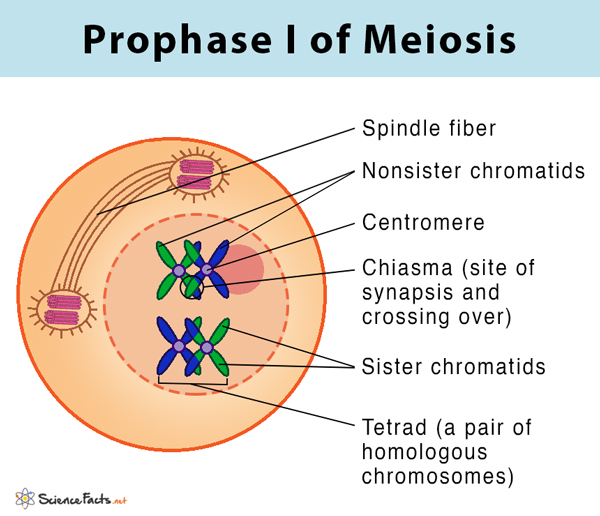
Spindle fibers are formed by two centrioles
thy bind to sister chromatids at the centromere
Pairing of homologous chromosome occurs
they begin to condense in a process called synapsis
The nuclear envelope breaks down
Cross over occurs to increase genetic variation
they exchange fragments
Metaphase I
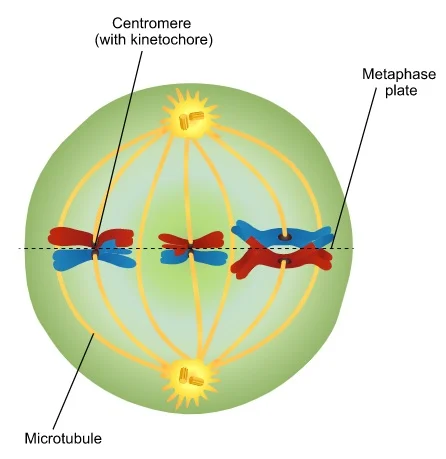
Chromosomes line up at the equatorial line
forms the metaphase plate
Centromeres attach to the spindle fibers
Anaphase I
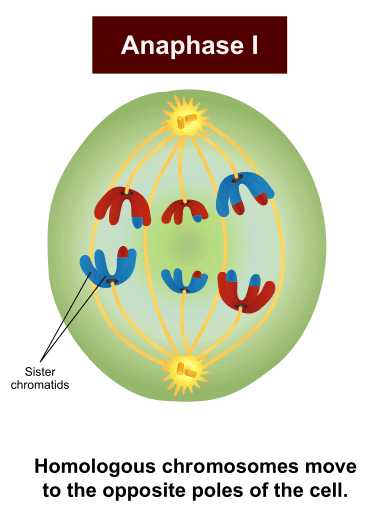
The chromosomes start getting pulled apart
the sister chromatids stay together
The homologous pairs get pulled apart
guided by the spindle fibers to move towards opposite poles of the cell
The chromosome number is reduced from 2n to n
Telophase I
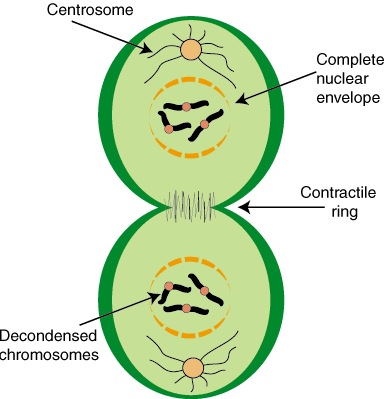
Homologous pairs are fully split apart
The nuclear membrane begins to form again
The spindles break down
Chromosomes uncoil and form two nuclei
Separates into two cells and is divided into a cleavage furrow
Result of Meiosis I: Two haploid cells that contain one duplicated copy of each homologous chromosome pair.
Meiosis II
Before Meiosis II, the cells undergo interkinesis(a period of rest)
no DNA is replicated
Prophase II
The two haploid cells produced undergo their own processes
Spindle fibers start to form, extends toward the chromosomes
Chromosomes condense
nuclear membrane starts to break apart
Metaphase II
Sister chromatids line up on the metaphase plate.
The chromosomes are connected to the centriole poles at the kinetochores of sister chromatids through the microtubules.
Anaphase II
The spindle fibers pull on both ends, separating the chromatids
Splitting of the centromere of the chromosome
The kinetochore microtubules shorten
Telophase II
Chromosomes decondenses after arriving at opposite poles
Nuclear Envelope Forms around the chromosomes
Cytokinesis
Separates the two cell into four unique haploid cells after dividing the cytoplasm
